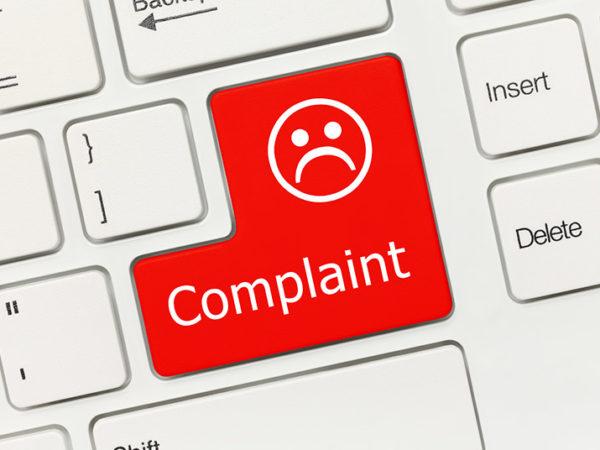
It’s essential to know how to respond to complaints in ways that strengthen compliance.
The way your company writes and records responses to complaints – and the way it communicates with regulatory authorities – can make a significant difference to outcomes.
Writing complaint responses that include the right elements and the right tone:
- improves customer satisfaction
- strengthens underlying compliance controls
- helps businesses avoid regulatory investigation and/or fines
- reduces the risk of damage to a company’s reputation.
Guidelines for responding to complaints
Use these guidelines when establishing company procedures for responding to complaints. An established complaints response procedure will ensure consistency and improve compliance.
Key steps in an effective response
How you tackle a complaint will differ based on your type of business and the nature of the complaint. However, the steps you should take to ensure a satisfactory response stay the same:
- Read the complaint more than once and make sure you understand the circumstances.
- Acknowledge the complaint and apologize for any inconvenience or offense caused.
- Explain what might have gone wrong and commit to an investigation.
- Propose an actionable solution to the problem that will solve the issue.
- Explain how the company will resolve the issue so it doesn’t happen again.
- Consider offering an incentive for the customer to use your services or products again.
- Reply to any follow-up questions or emails from the customer.
What to avoid in regulated complaint responses
In a regulated work environment, responses to complaints are recorded and form part of your compliance documentation. It’s imperative that you document all the facts and information surrounding a complaint.
To avoid compliance consequences, look out for these pitfalls when drafting responses to complaints.
- disclosing any potential lack of compliance to the customer
- making assumptions about the complaint
- commenting on or blaming company policy or procedure
- making promises that can’t be honored
- taking too long to resolve a complaint or honor a commitment
- dealing with the complaint but not taking preventative action.
It’s important not to use an arrogant or insincere tone, or verbose and complicated wording, when drafting a response.
A recommended layout for writing complaint responses
To ensure you cover everything that should be included in a response to a complaint, use a standardized layout such as the one recommended below.
Start with a salutation that’s courteous and then acknowledge receipt of the complaint. Follow with an introduction that covers the circumstance of the complaint (this should include information such as dates and times) and an initial apology.
Follow with the main body that covers the key points of your response, including any explanations and the proposed actionable solution/s.
The concluding paragraph should include any incentives you plan to offer, as well as a final apology. It can give any information about following up, meetings or pertinent contact information.
End with a complimentary close (e.g. sincerely), your name and title. Don’t include the names of anyone else unless authorized to do so.
What to include in a response to a regulatory authority
When documenting your responses to complaints and your complaints handling procedures, these are the key things to communicate to the regulatory authority.
The issue that caused the complaint in the first place needs to be clearly identified.
The root cause of the issue must be identified (usually after the investigation stage).
Highlight the company’s ability to find and fix the problem without blaming or complaining.
Include any changes to procedures that were implemented to prevent future complaints.
At all times, bear in mind that documented complaints may one day be read by a regulatory authority such as the FDA.
The role of effective document management
Effective document management is essential for ensuring complaints, responses and changes to procedures are recorded for future reference and potential audits.
A document management system ensures that complaints and investigative steps are tracked by the necessary people or departments and preventative actions are taken timeously.
The system can help if approval of documents is required as part of the complaints response process.
Once the complaints response process is complete, the system can help you ensure the complaint was fully resolved before it was closed.
What isoTracker offers
isoTracker offers online document management and complaints management software modules as part of a larger cloud-based QMS system.
With digital complaints and document management, issues can be easily and securely tracked, recorded and resolved in a centralized, online location using real-time data.
Contact us to find out more about our complaints and document management software or sign up for a free 60-day trial with full access, email support, help resources, and free video guides.


